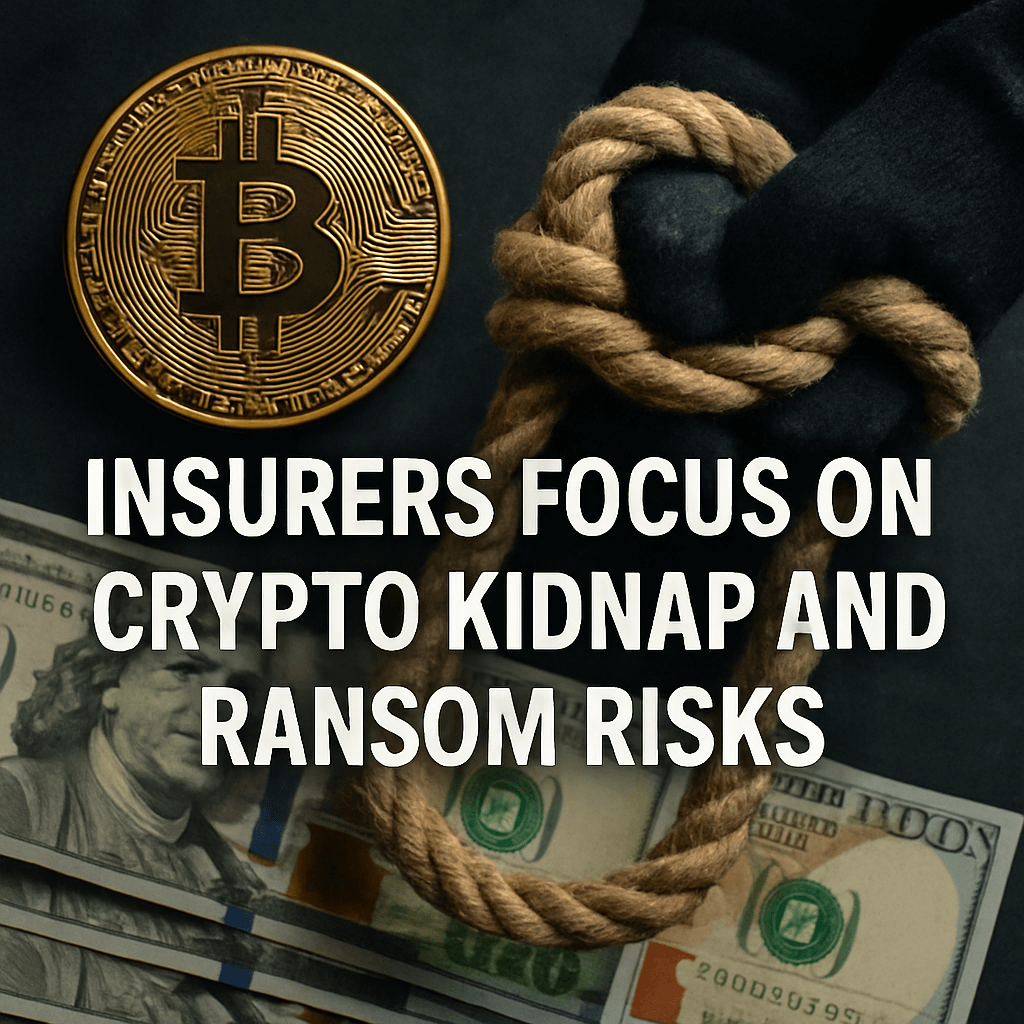Insurers Focus on Crypto Kidnap and Ransom Risks


As the cryptocurrency market continues to mature, so do the threats faced by its participants. Recent reports indicate a worrying increase in kidnap and ransom scenarios targeting crypto executives and investors, prompting insurance companies to respond with specialized policies designed to mitigate these risks.
The Rising Trend of Kidnap and Ransom in Crypto
The surge in violent attacks against individuals with significant crypto assets reflects a broader trend as organized crime shifts to target lucrative virtual currencies. According to industry experts, the decentralized nature of cryptocurrencies makes them particularly attractive to criminals, as transactions are often anonymous and difficult to trace.
In recent months, high-profile cases have highlighted this trend. For instance, reports from CipherTrace reveal that nearly $1.9 billion worth of cryptocurrency was stolen through various criminal activities in 2022 alone, indicating a robust market for criminal enterprise surrounding digital assets.
How Insurance Companies are Adapting
In light of these evolving threats, insurance firms are rolling out kidnap and ransom insurance packages that cater specifically to the cryptocurrency community. Traditional policies typically cover physical risks—physical harm or property damage—but as the blockchain sphere grows, so does the need for more tailored products that encompass unique threats.
Technical Aspects of Crypto Kidnap Insurance
- Policy Coverage: These insurance products often cover ransom payments made to kidnappers, as well as expenses related to negotiation, crisis management, and recovery of assets.
- Premium Costs: Due to the high-risk nature of this type of insurance, premiums can vary significantly, influenced by factors such as the insured’s profile, the amount of cryptocurrency assets held, and the perceived risk of kidnapping based on geographical location.
- Global Reach: Some insurers are extending their coverage globally, recognizing that the risk is not confined to any one region. Areas with higher profiles for cryptocurrency usage may see more targeted offerings.
Experts believe the integration of AI technologies into ransom negotiations could affect how these policies are structured in the future. Automated negotiation tools might help in determining optimal ransom amounts or handling crisis situations more efficiently.
The Role of Cyber Security in Kidnap and Ransom Insurance
In addition to direct ransom events, the intersection of cyber security incidents, such as phishing or hacking attempts, adds another layer of complexity to the risk landscape. As reported by cybersecurity firm Chainalysis, the incidence of scams specifically targeting cryptocurrency holders is on the rise, accounting for significant losses. Insurers are increasingly considering both physical and cyber threats when assessing risk portfolios.
Implications for Investors
For investors, the availability of kidnap and ransom insurance can provide reassurance that their assets are protected against such risks. However, the need for comprehensive due diligence remains crucial. Investors are advised to understand the terms and coverage details of any insurance they intend to purchase carefully. Additionally, engaging with financial advisors who are knowledgeable about the crypto sector can help provide further insights into risk management strategies.
“As the crypto space continues to face threats from organized crime, we anticipate a growing demand for tailored insurance solutions that address both traditional and digital risks,” said a spokesperson from one leading insurance firm.
With the cryptocurrency market projected to expand even further, the enhancement of risk management tools, including specialized insurance products, will be essential in ensuring the industry’s sustainability and security.